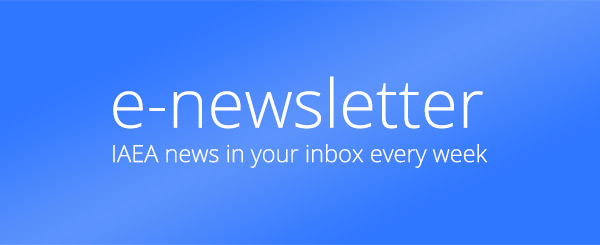Director General Rafael Mariano Grossi held talks with senior Russian officials in Moscow this week as part of his ongoing efforts to agree and implement a much-needed nuclear safety and security protection zone around Ukraine’s Zaporizhzhya Nuclear Power Plant (ZNPP), where a planned rotation of a team of experts from the International Atomic Energy Agency (IAEA) has been delayed due to increased military activity.
Director General Grossi – who also recently discussed the proposed zone with President Volodymyr Zelensky and other Ukrainian officials in Kyiv – met with the head of state nuclear company Rosatom, Alexey Likhachev, and an intra-governmental group of the Russian Federation after his arrival in Moscow on Thursday afternoon, and further discussions were held today at the Foreign Ministry.
“Both in Kyiv and Moscow, we are continuing our determined diplomatic work aimed at establishing the zone as soon as possible. This week’s meetings in Moscow were important in this regard, enabling us to discuss the plan in detail with senior representatives of the Russian government. I remain hopeful that the zone will be established, although progress should have been faster. For the sake of nuclear safety and security in Ukraine and beyond, I will continue my efforts until the zone has become a reality,” Director General Grossi said as he returned to IAEA headquarters in Vienna.
The precarious situation and the importance of protective measures were underlined once again this week, when military activity delayed a scheduled rotation of the IAEA team, present at the ZNPP for the past month. Director General Grossi established the IAEA Support and Assistance Mission to Zaporizhzhya (ISAMZ) on 1 September last year, and the current team is the fifth so far. During rotation, the IAEA teams cross the frontline into Ukrainian-controlled territory.
“The situation around Europe’s largest nuclear power plant remains volatile and unpredictable, as it is an active combat zone. The postponement of the planned rotation demonstrates all too clearly the need for urgent measures to protect the plant and the people working there,” Director General Grossi said.
Separately this week, the State Nuclear Regulatory Inspectorate of Ukraine (SNRIU) informed the IAEA that it would only permit the ZNPP to resume power-generating operations after it has been returned to the control of Ukraine and a thorough inspection programme and the implementation of any measures deemed necessary to restore the plant to safe working conditions have been completed. Currently, the plant’s six reactors are either in cold or hot shutdown mode.
Today, the Ukrainian regulator also informed the IAEA that two of the three operating Ukrainian nuclear power plants (NPPs) – Rivne and South Ukraine – had reduced power output as a precautionary measure due to renewed shelling of the country’s energy infrastructure. The instability in the electrical grid from the shelling also caused one of the Khmelnitsky reactor units to shut down. These developments were confirmed by the IAEA Support and Assistance Missions that are onsite at the plants, who also confirmed that all nuclear safety systems at Khmelnitsky worked as expected.
The IAEA is also continuing to organize and coordinate deliveries of equipment to help Ukraine ensure nuclear safety and security. In the ninth such delivery, Ukraine’s national regulator today received equipment procured by the IAEA with extrabudgetary funding from the United States.


